Here they are:
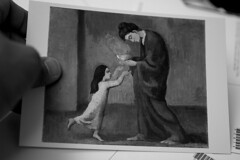
Soup, 1902.
Oil on canvas, 38.4 x 46 cm.
Art Gallery of Ontario, gift of Margaret Dunlap Crang, 1983;
(c) 2011 Estate of Pablo Picasso.
This one was at the SFMoMA. The paintings during this time are characterized by muted color tones and Blue Period subjects which included prostitutes, beggars and poor mothers with their children.
Self Portrait, 1906.
Oil on canvas, 65 x 54 cm.
Musée national Picasso Paris, MP8.
Photo (c) RMN.
The De Young Museum arranged the paintings by era. This one was in a section called Barcelona and Paris, 1901-1906. Pablo Picasso used to be just a name of a great painter that I learned from reading books. I didn't become a fan of his works until I saw his huge Guernica painting at the Reina Sofia Museum when I joined a tour organized by the Spanish language immersion school I briefly attended in Madrid years ago. I remember it was such an awe-inspiring moment.
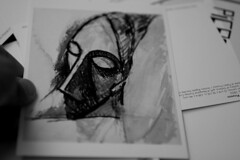
Head in Three-Quarter View, 1907.
Gouache and watercolor on paper, 29.9 x 23.5 cm.
San Francisco Museum of Modern Art, bequest of Elise S. Haas.
(c) 2011 Estate of Pablo Picasso.
This was at the SFMoMA. The style changed yet again. This time it is more African or Oceanic inspired. I learned that it was around this time when Picasso saw African and Oceanic art for the first time at Paris's Ethnographic Museum.
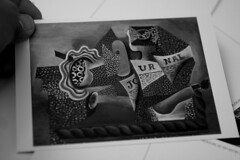
Still Life with Fruit, Glass and Newspaper, 1914.
Oil and sand on canvas, 34.5 x 42 cm.
The Kreeger Museum, Washington, D.C.,
(c) 2011 Estate of Pablo Picasso.
This was at the SFMoMA as well. This is where he started experimenting how three dimensions could be transformed two-dimensionally, showing different views at the same time because the objects are left to their simpler individual elements. I think he did a great job thinking outside his academic painting styles.
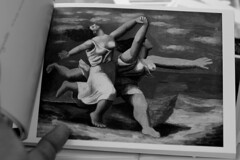 Two Women Running on the Beach, 1922.
Two Women Running on the Beach, 1922. Gouache on plywood, 33 x 41 cm.
Musée national Picasso Paris, MP78.
Photo (c) RMN.
At the De Young Museum, this painting was in the Neoclassicism 1918-24 section. This painting has more natural characteristics and is far from being abstract. I wonder how art patrons who started adopting the Cubist style felt when Picasso leaned more toward classical and less on avant-garde style during this time?
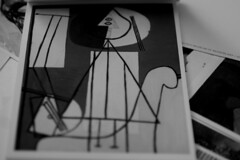
Painter with a Palette and Easel, 1928.
Oil on canvas, 130 x 97 cm.
Musée national Picasso Paris, MPI04.
Photo (c) RMN.
This was at the De Young Museum. I didn't really enjoy this painting as much as the others. I just included this because of the obvious change of style (again). Let's see if you can located the subjects on the canvas.
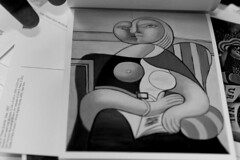 Reading, 1932.
Reading, 1932. Oil on canvas, 130 x 97.5 cm.
Musée national Picasso Paris, MPI37.
Photo (c) RMN.
This is another of my favorite at the De Young Museum exhibition. In the master painter's life, he's had many women, either his wives or his mistresses and he painted using them as inspiration. I just can't remember if this painting is his wife at the time Olga or this is inspired by a mistress?
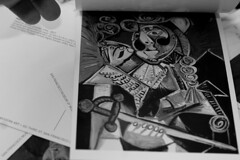 The Matador, 1970.
The Matador, 1970. Oil on canvas, 145.5 x 114 cm.
Musée national Picasso Paris, MP223.
Photo (c) RMN.
This is one of his late works. This is a beautiful painting. Can you see the sword in the painting? What about the cigar? I learned that many of his paintings in this era were painted directly on the canvas without sketches or preliminary studies. He painted over 3600 works all in all.
The next time I go to Paris, I should set aside a few days to browse all the Picasso paintings in the City of Lights. In the meantime, I'll enjoy the available Picassos in my little city.
~rl
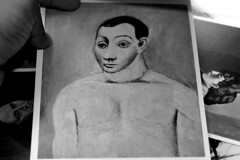
No comments:
Post a Comment